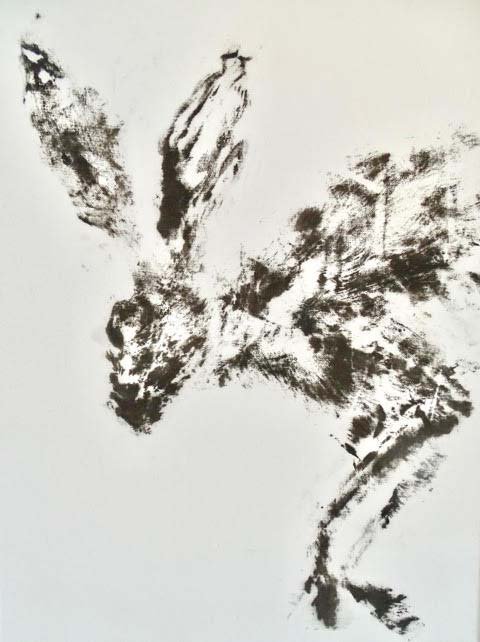
Abject Art and Aversion
Featuring works by: Catherine Eaton Skinner, Kalam Dhari, Liset van Dommelen, meekfreak, Siew Guang Hong, Sudhir Pillai, T. Shuxia and Terry Murray.
Arranged by: T. Shuxia and Lee Ju-Lyn
“‘For one who attends appropriately to the theme of the unattractive, unarisen passion does not arise and arisen passion is abandoned.…’
Abject Art
A painting of Intestines trailing out of a headless body (T. Shuxia), latex balloons that look like pig bladders (Siew Guang Hong), a print of a dead hare (Liset van Dommelen) and a short story about peeling off one’s skin (Meekfreak). These are imagery from some artworks collated in this issue that lean toward the disturbing - be it the way they look, the materials used, their processes, concepts or the topics presented. They made us think of abject art, a term used to describe artworks that reference the body or bodily functions that are seen as taboo or unclean- excrement, menstrual blood, vomit, wounds and pus, the insides of the body that should not be seen (organs, flesh, bones etc), and death. While not all artworks in this section are abject or are deemed to be by the artists who made them, abject art as an idea has certainly inspired our approach to this article.
Zombie Diaries: Carrion
T. Shuxia (2020)
14.8 x 21 cm
Watercolour, colour pencils, markers, acrylic and ink on paper
tshuxia.com
Pigs Can Fly
Siew Guang Hong (2018)
152.8 x 82.5 x 91.5 cm
Balloons, latex
siewguanghong2@gmail.com
Hare print
Liset van Dommelen (2019)
40 x 30 cm
Fabric, framed
ateliervandommelen@hotmail.com
Sometimes, I rest my forehead
Meekfreak (2006)
Short story (click on image to view)
Abjection and Death
The concept of abjection, from which the word abject in abject art comes from, was explored by Julia Kristeva in her 1982 book “Powers of Horror”. It is a complex work that draws on theories by Sigmund Freud and Jacques Lacan to examine among others (and for the purpose of this writing), horror and the collapse of meaning by looking at the founding and breaching of bodily boundaries - the inside/outside (of the body) and the I/not I. Abjection according to Kristeva is not just a lack of cleanliness or health, it is that which disturbs these borders, rocking our identities, systems, order, rules and positions. (Kristeva, 1982) Thus, abjection can be people or actions that violate our moral consciousness. They can also be ambiguous and in-between, for example would using dead animals in art be crossing the boundary of our moral code? (Kristeva, 1982)
Magpie print
Liset van Dommelen (2017)
24 x 30 cm
Fabric, framed
ateliervandommelen@hotmail.com
genus Scylla
Siew Guang Hong (2022)
Installation arrangement
Sustainably scavenged crab shells, silicone, polyester
siewguanghong2@gmail.com
For Kristeva, the most horrifying and upsetting form of abjection would be death. She says, “If dung signifies the other side of the border, the place where I am not and which permits me to be, the corpse, the most sickening of wastes, is a border that encroaches upon everything. It is no longer I who expel, “I” is expelled.” (Kristeva, 1982, p. 3-4) Not coincidentally, the group of artworks featured here have elements of death in them. While Kristeva painted an adverse reaction towards the abject, ie death and waste, abjection in the artworks here seem to be geared towards confronting what we repress, reminding us of our mortality as living beings and as an ecosystem. In this case, death is not to be feared but respected (Liset van Dommelen’s animal prints), to be reflected upon (Siew Guang Hong’s Pigs can fly and genus Scylla), to be at peace with (Kalam Dhari’s The cycle of life and death), to be contemplated on (T. Shuxia’s Zombie Diaries series) and as a release (Meekfreak’s Sometimes, I rest my forehead).
For more details on the artworks, do click on the images for the artists’ statements.
The cycle of life and death
Kalam Dhari (2019)
27.2 x 42 cm
Ink on paper
sbaheti1@gmail.com
Zombie Diaries: Mushroom
T. Shuxia (2020)
14.8 x 21 cm
Watercolour, colour pencils, markers, acrylic and ink on paper
tshuxia.com
Zombie Diaries: Touch-me-not
T. Shuxia (2020)
14.8 x 21 cm
Watercolour, colour pencils, markers, acrylic and ink on paper
tshuxia.com
Aversion as an “unskillful root”
Relevant to the “adverse reaction” as mentioned by Kristeva, “aversion” in Buddhism is prominently featured in the concept of the three “poisons” or “unskillful roots”, namely, 1) Greed or Passion, 2) Aversion or Hatred, and 3) Delusion or Ignorance. The three “roots” motivate unwholesome and unskillful actions or behaviour that perpetuates suffering, such as feelings of anger that motivates acts of violence. The Buddha elaborated on them in the Roots (Mūla) Sutta (AN 3:70) and Sectarians (Titthiya) Sutta (AN 3:69) and explains that the Buddhist ideal is to reduce or be rid of greed or aversion since they give rise to unskillful behavior.
This is depicted by Sudhir Pillai, in his work which employs the classical symbolism of the three poisons with a rooster (for greed), a snake (for aversion), and a pig (for delusion).
Tight rope walk of Buddha
Sudhir Pillai (2022)
143 cm X 114 cm
Acrylic on canvas
sudhirpillai41@gmail.com
It is apt that the audience’s adverse reaction seems fundamental to the definition of “abject art”, since “art” is traditionally deemed as pleasing or attractive. Should one, by definition, feel adverse towards the abject art object? What if one feels attracted or satisfied instead? Here, abject art aids reflection on the distinctions between 1) the external objectivity of the art object, and 2) the internal subjectivity of one’s perception of it, that gives rise to attraction and aversion.
The Sectarians or Titthiya Sutta (AN 3:69) explains how one could augment these internal perceptions.
It explains that thinking about goodwill might help reduce aversion. Such as how considering the skillful reflections inspired by abject art might encourage sentiments of goodwill to arise and reduce one’s sense of aversion.
It also explains that appropriate attention to unattractiveness might help manage passion arising.
“‘For one who attends appropriately to the theme of the unattractive, unarisen passion does not arise and arisen passion is abandoned.…’
For example, contemplation of the unattractiveness of the body might help lead to detachment from sensual desires. On the other hand, inappropriate attention towards attractiveness would encourage passion, for instance, excessive focus on the attractiveness of the human body might encourage lust and other sensual attachments. These considerations are in line with discussions on abject art as well.
Although not an abject artwork, Catherine Eaton Skinner’s Kunzi V, Cosmic Ocean from her Marking Sacred series is relevant to such reflections. About this work, she describes:
The weight of anger
falls deep
into one’s soul
burrowing
into the heart
Only
the steady
beat of love
is able
to burn
it away.
(CESkinner, Dec 2021)
Kunzi V, Cosmic Ocean
Catherine Eaton Skinner (2016)
44 x 33 x 8 cm
Palladium metal leaf, antique plumb bob with original string and handle, encaustic on panel
http://www.ceskinner.com
Unattractiveness or Asubha meditation
It is perhaps in similar veins of deliberation that Unattractiveness or Asubha meditation is encouraged, whereby one typically considers the unattractiveness of food or the body. (See Unattractiveness or Asubha Sutta (AN 4:163)). In one form, it could be considering how the body is merely made up of its primary elements, as depicted in Terry Murray’s Five Elements Buddha. The sutta sometimes refer to four or six elements as well.
“And further, monks, a monk reflects on this very body, however it be placed or disposed, by way of the material elements: "There are in this body the element of earth, the element of water, the element of fire, the element of wind."
— Satipatthana Sutta: The Foundations of Mindfulness" (MN 10)
“‘Bhikkhu, this person consists of six elements.’ So it was said. And with reference to what was this said? There are the earth element, the water element, the fire element, the air element, the space element, and the consciousness element. So it was with reference to this that it was said: ‘Bhikkhu, this person consists of six elements.’
— Dhātuvibhaṅgasutta (The Exposition of the Elements) (MN140)
Five Elements Buddha
Terry Murray (2020)
380cm H x 310cm W x 180cm D
Assemblage & acrylic paint
www.creativepilgrimjourney.com
Asubha meditation may extend to the tradition of monks who contemplate rotting corpses, which could be traced back to the Buddha himself, for when he was still a young prince, he was inspired to seek the path after witnessing the “abject sights” of ageing, illness, and death.
Alongside this practice, the tradition of Buddhist art that depicts rotting corpses was given rise, most notably in Kusōzu, a genre of Japanese paintings that depicts the nine Stages of decaying corpses.
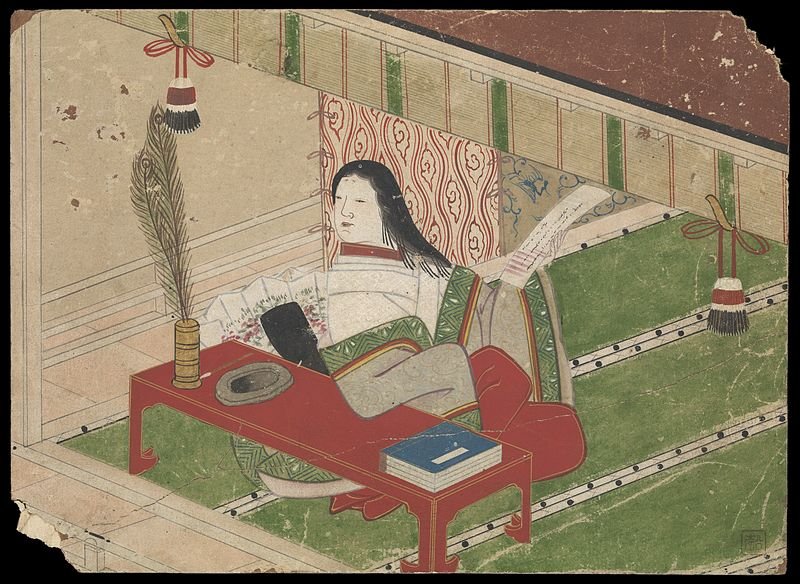
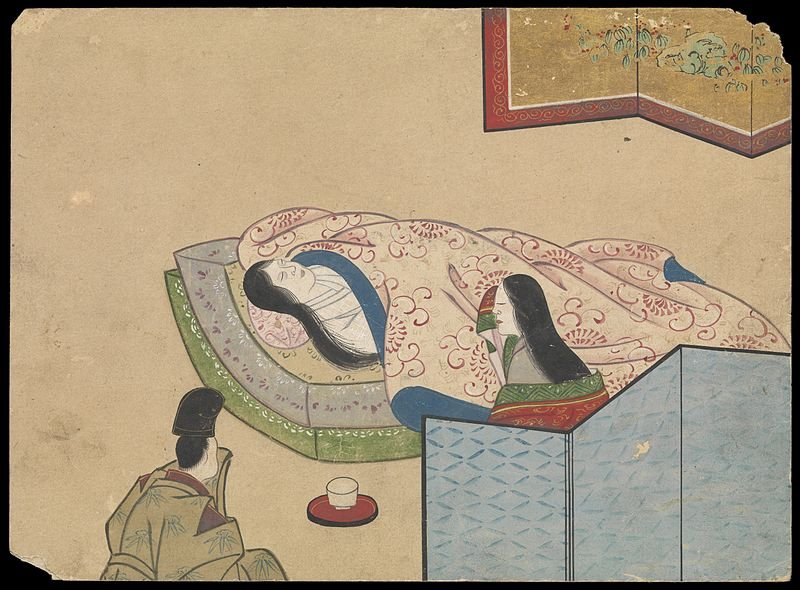
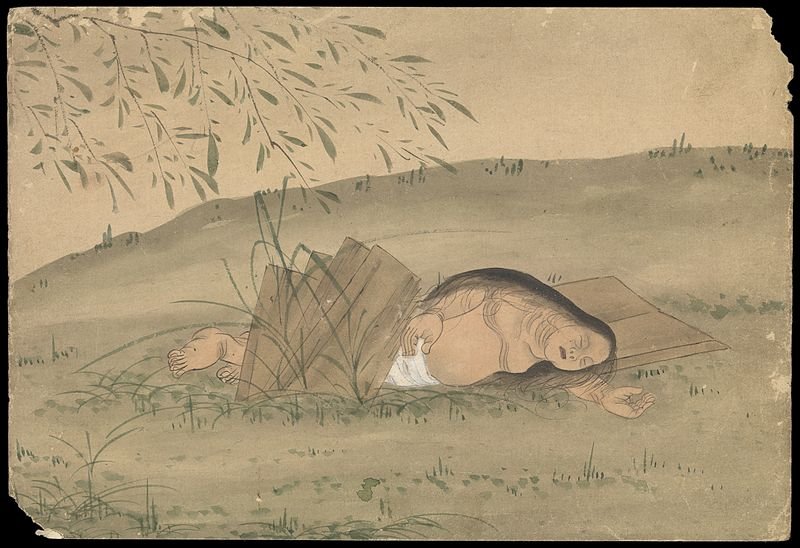
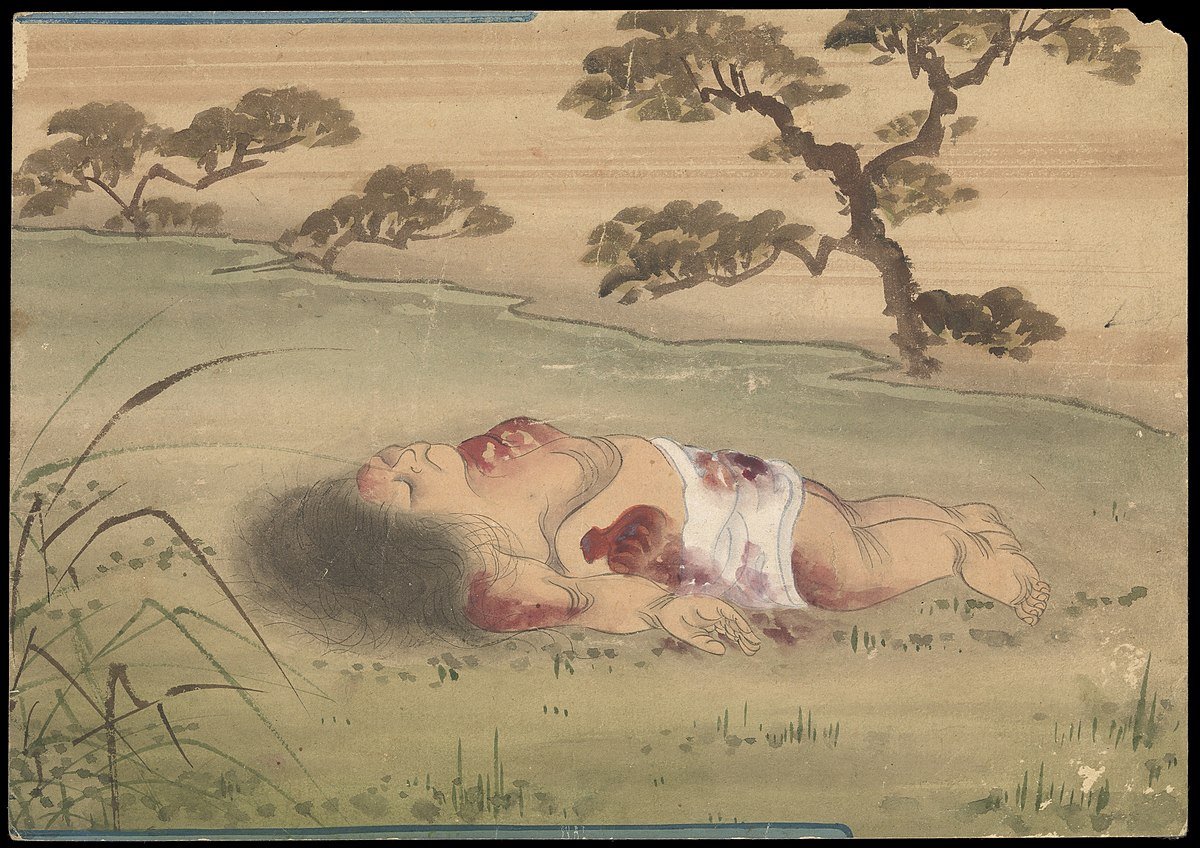
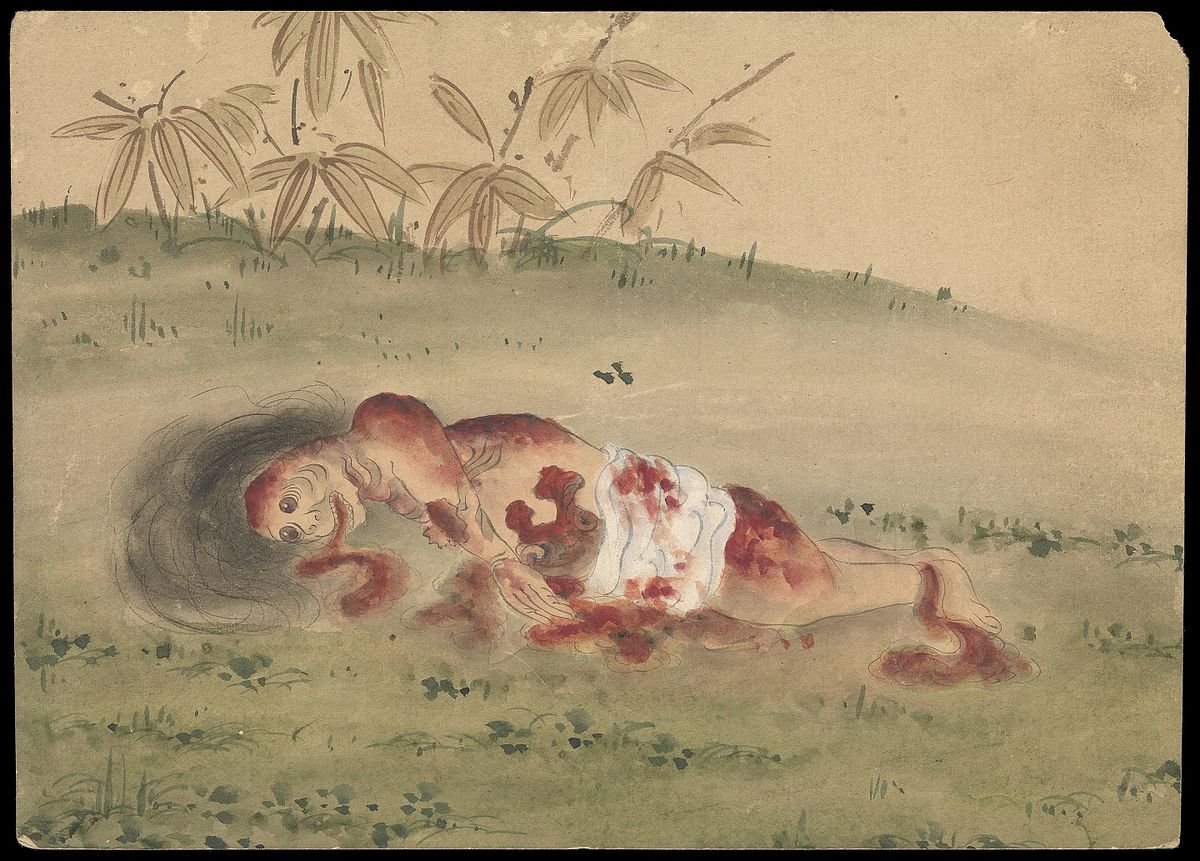

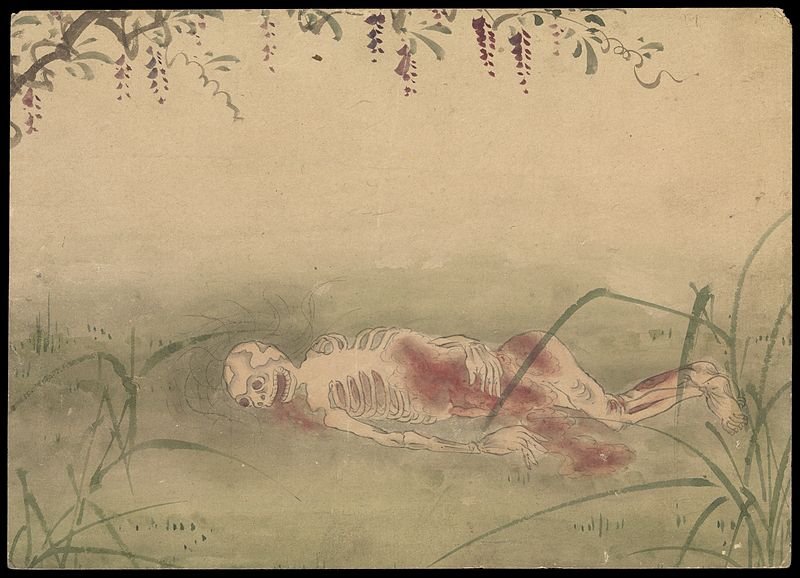
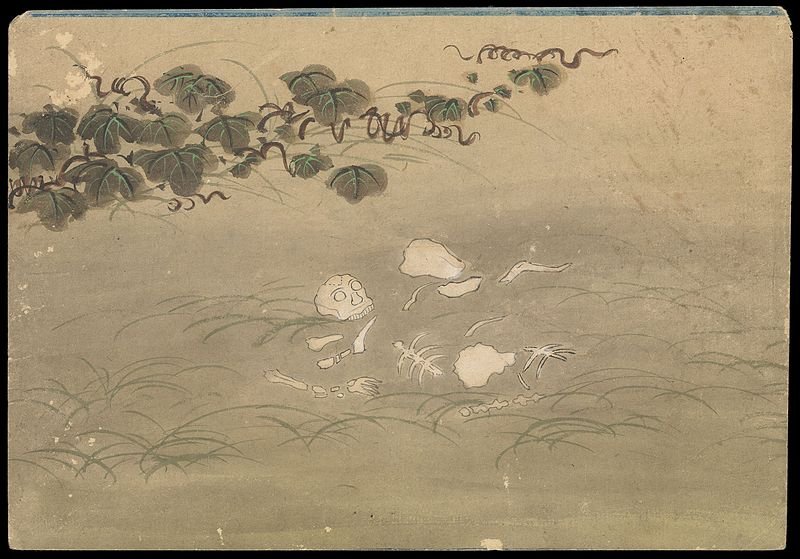
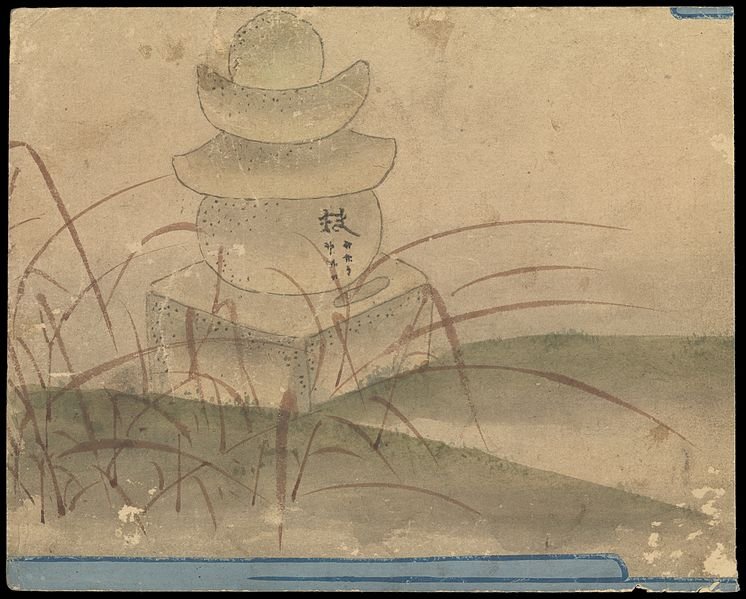
Bibliography
Bhikkhu, T. (Trans.). (n.d.). Sectarians Titthiya Sutta (an 3:69). AN 3:69 Titthiya Sutta | Sectarians. Retrieved September 12, 2022, from https://www.dhammatalks.org/suttas/AN/AN3_69.html
Kristeva, J. (1982). Powers of horror: An essay on abjection. Columbia University Press.
"Satipatthana Sutta: The Foundations of Mindfulness" (MN 10), translated from the Pali by Nyanasatta Thera. Access to Insight (BCBS Edition), 1 December 2013, http://www.accesstoinsight.org/tipitaka/mn/mn.010.nysa.html .
Thānissaro Bhikkhu (Trans.). (n.d.). Roots mūla sutta (an 3:70). AN 3:70 Mūla Sutta | Roots. Retrieved September 12, 2022, from https://www.dhammatalks.org/suttas/AN/AN3_70.html
Thānissaro Bhikkhu. (Trans.). (n.d.). Sectarians Titthiya Sutta (an 3:69). AN 3:69 Titthiya Sutta | Sectarians. Retrieved September 12, 2022, from https://www.dhammatalks.org/suttas/AN/AN3_69.html
Thānissaro Bhikkhu (Trans.). (n.d.). Unattractiveness asubha sutta (an 4:163). AN 4:163 Asubha Sutta | Unattractiveness. Retrieved September 12, 2022, from https://www.dhammatalks.org/suttas/AN/AN4_163.html
Further readings
Here are some further references on Kusozu:
https://www.talkdeath.com/contemplation-of-a-decaying-corpse-the-japanese-art-kusozu/
https://www.amusingplanet.com/2019/04/human-decomposition-in-japanese-artwork.html
These are some links to some video on Asubha meditation, although please be advised to exercise discretion in viewing as they contain some very graphic depictions that may cause discomfort, such as the dissection of human parts and killing of animals.
Here is a comprehensive website on considering the 32 parts of the body: https://32parts.com/practice.html


